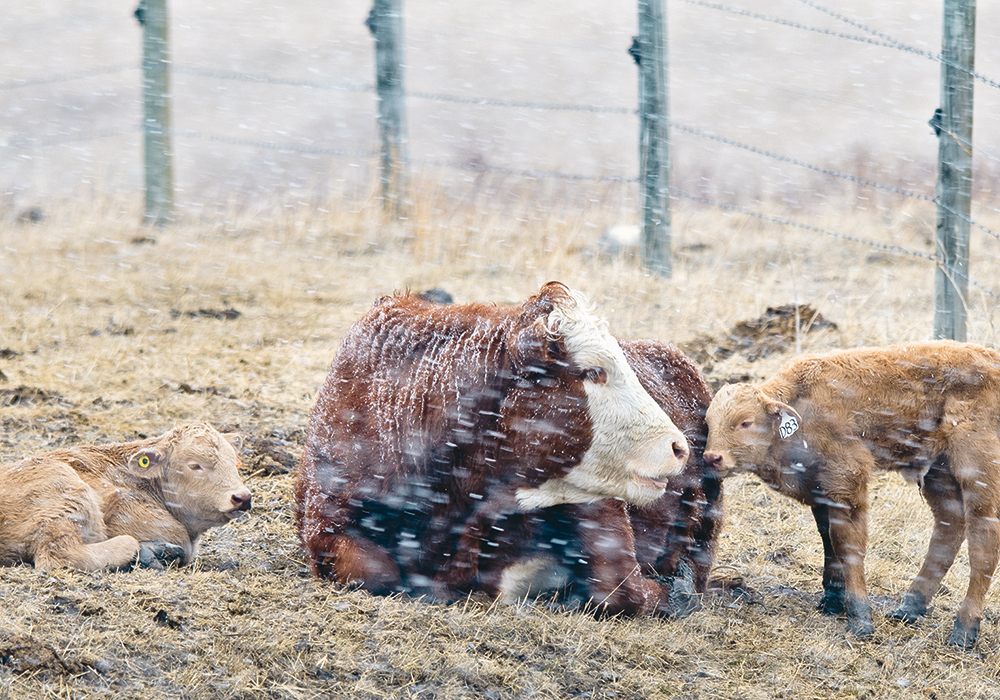Provincial Disaster Assistance Program will for the first time provide compensation for losses caused by snowstorms
Saskatchewan livestock producers affected by recent blizzards may be eligible for help under the Provincial Disaster Assistance Program.
Kelcy Elford, president of the Saskatchewan Stock Growers Association, said some producers suffered devastating losses in the last couple of spring storms.
“We welcome the government’s quick response to the financial devastation they’re going to face going forward,” he said.
Agriculture minister David Marit said this is the first-time producers will be compensated for uninsurable losses due to snow storms through PDAP.
“We’ve never had this amount of snow and virtually two weeks in a row,” he said. “It was like almost back-to-back, plus they’re right into calving season so it’s obviously concerning for us that way.”
Read Also

Quebec pork company calls for transparency around gene-edited pigs
Quebec-based pork company duBreton is calling for transparency around meats from gene-edited pigs on concerns that a lack of mandatory labelling will confuse consumers, and dilute certification claims. The organic sector is also calling for labelling rules.
Heavy snow has hammered both the southwestern and the southeastern parts of the province in recent weeks. The ministry has had reports of about 400 animals lost due to the snow and final tallies could be much higher once producers are able to assess their situations.
“The concern we have is that a lot of producers probably don’t even know yet because a lot of their calves are probably buried under snow. What we’re asking is they get in touch with their municipality (and) make sure the municipality has declared a disaster because that’s first and foremost, and that they take pictures or have some form of evidence of losses,” he said.
He said industry didn’t ask for the help but the government was listening.
“We heard some municipalities had declared a disaster,” he said.
According to the PDAP website, as of April 29 only the town of Maple Creek had fully completed the process. Municipalities have up to one month from the date of a disaster to initiate a request.
Elford said he didn’t doubt there would be more losses than those initially reported, and he said there are ongoing health concerns for animals that were caught in the heavy snow and wind that could also affect producers’ bottom lines.
Marit said producers cannot have insured their cattle through any other programs. Compensation will be paid using the rates for wildlife damage and livestock predation through Saskatchewan crop insurance.
Meanwhile, the province, along with the federal government and other provinces, has also announced the date to enrol in AgriStability this year has been extended to June 30.
Marit said the request came mainly from Ontario and Quebec where producers are struggling with the outbreak of highly pathogenic avian influenza.
“Why wouldn’t we support them in this?” he said, noting Saskatchewan and others are affected as well. “It just means an opportunity for producers, even here, if they’re looking at going into the programs.”
The deadline extension comes without penalty and also helps producers deal with current market disruptions, increased costs and production challenges.
“Many producers are facing stress and uncertainty due to circumstances beyond their control. This step to extend the enrolment deadline will help more producers manage the impact of challenges facing their farm operations and provide them with more time to take advantage of the support available under AgriStability,” said federal agriculture minister Marie-Claude Bibeau in a news release.
Marit has urged all producers to take a look at the program, which is more responsive now that the reference margin limit has been removed. Some producers will be affected again this year with dry conditions while others, particularly in the southeast, may be too wet.
“Producers cannot control every risk impacting their operation, but they can control how they prepare for them,” Marit said.
Although many farmers say AgriStability doesn’t work, it has paid out more than $435 million in the province in the last five program years.


















